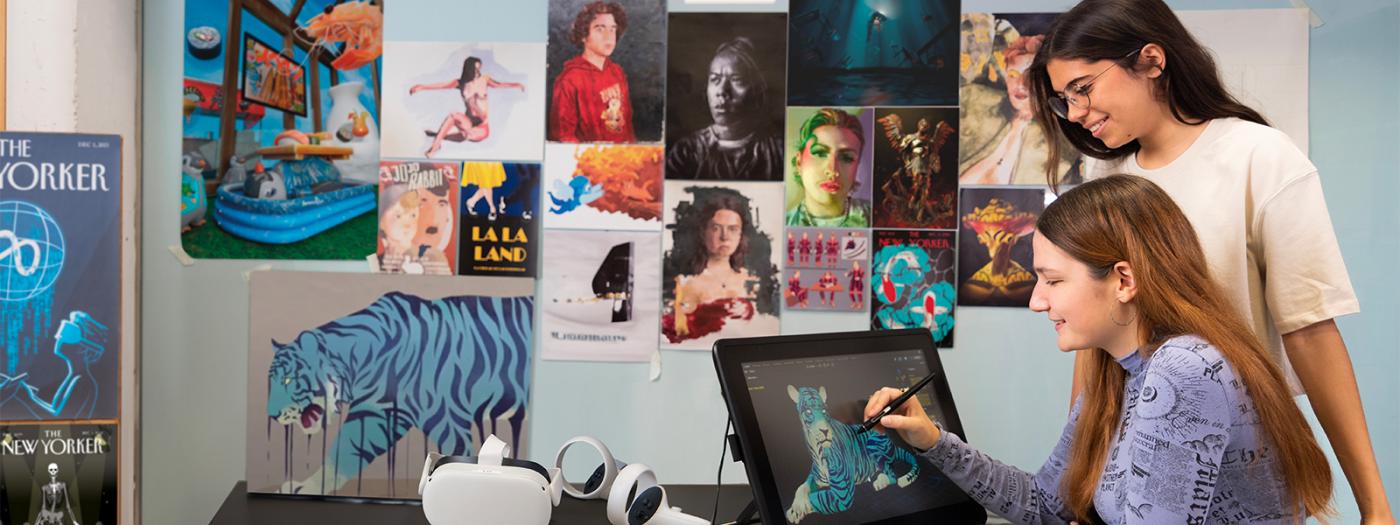Titular Professors
Understand the principles of game design and game development phases
Create traditional games such as board and card games
Prepare digital games
Demonstrate capacity to communicate
Demonstrate a capacity for critical analysis of the theoretical and practical contexts relevant to this area
Identify and apply appropriate research methods and theoretical frameworks for game design
Articulate a presentation
Demonstrate capacity to communicate
Write a game design document (GDD) using the vocabulary acquired in class
Role of the Game Designer and iterative design.
What are the differences between game programming and game design.
What is a game?
Defining digital games, board games, card games, mix games.
Games as emergent systems.
The 4 basic elements.
Idea.
Iteration and game development phases.
Mechanics.
Space.
Objects.
Actions.
Rules.
Balance.
Interface (UI)
Game Heuristics.
Design your game interface.
Worlds.
Characters.
Types of players.
Documents
Game design document (GDD)
The porpose of documents.
Documents and game development phases.
Creating a great pitch for the client.
In this course, we explore the fundamentals of game design. We will be creating games (not computer). This is important for understanding the basic concepts that go into a game and to Sharp our understanding of games by critiquing them. All games share fundamentals that allow game designers to create any game (for mobiles, console, etc.). Students need to understand what are the differences between game programming and game design. Game designers need to have some level of creative genius to come up with new game concepts and plans. They decide how things should look and function in a game. Game designers may be more focused on the creative vision for the game, while game programmers need to focus on the practical details involved in making the game operate the way that the designers want it to. The course requires regular reading, writing and presentation exercises and a minimum of 13 class attendances.
The final grade of the course will be calculated from the grade of the two semesters:
FIRST SEMESTER'S GRADE (40%)
? P1 (10%) (Moderately significant)
? P2 (15%) (Moderately significant)
? P3 (15%) (Moderately significant)
SECOND SEMESTER'S GRADE (60%)
? P4 (25%) (Moderately significant)
? P5 (20%) (Moderately significant)
? P6 (15%) (Moderately significant)
EXTRAORDINARY RECOVERY. JULY
Continuous evaluation grades cannot be retrieved. Recovery of the PRACTICE (parts 1,2,3,4,5) in a single delivery.
RULES AND CLARIFICATIONS
In case of copy, the current regulations of the University will be applied. Any work that uses information from third parties, whatever the source, either partially or totally, is considered a copy. All material submitted, unless otherwise specified in the statement, must be the student's original. If the statement allows for the delivery of third-party material, it must be correctly referenced. Otherwise, it will be considered a copy and will result in a zero in the file and the loss of the call according to the rules of the University.
On the day of the presentation, all members of the group must be present for the practice to be accepted. If it is detected that in a work submitted by a group any of the members has not participated, either in whole or in part (all members must participate in the realization of all points of the statement), the person in question will have a note of Not Presented (NP). If there is any suspicion of this on the part of the teacher, he or she may ask the student for an interview to demonstrate his or her knowledge of the subject. Submissions have a strict deadline. Submissions must be made through the eStudy in the appropriate well with the correct format.
It is the student's responsibility to check that the submission has been made correctly. Therefore, the student must ensure that the file is correctly hung in the well and that it is the correct version, the correct format and can be opened without problems. Otherwise, the practice will be considered as Not Presented (NP) and no complaints will be admitted.
Dedication to the subject: 5 credits at 25 hours/credits
Annual dedication: approx. 30 teaching weeks
Weekly dedication: 2 hours of class
A minimum dedication per student of approximately 125 hours is calculated, but each student adapts the workload of the internship.
Schell, J. (2008). The art of game design: A book of lenses. Amsterdam: Morgan Kaufmann.
Rogers, S. (2010). Level up. ED Wiley.
Contreras Espinosa, R.S., Eguia Gómez, J.L., Lozano, A. (2014). Juegos Multijugador, el poder de las redes en el entretenimiento. Barcelona: Editorial UOC, S.L.
Koster, R. (2005). A theory of fun for game design. Scottsdale: Paraglyph Press.
Contreras Espinosa, R.S. (2017) Experiencias de Gamificación en las aulas. https://ddd.uab.cat/pub/llibres/2018/188188/ebook15.pdf
